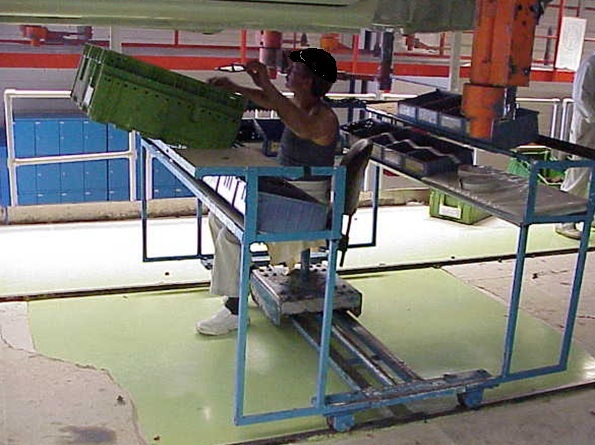Advantages of the MTM methods compared to other time-determining techniques
- Work methods, as well as, set-up and run times can be defined in detail, while still in the planning phase. This is also true for job tasks being performed for the first time.
- MTM requires the user to define the work methods in detail before determining the time. In critically analyzing the developed methods, they can determine the best method under the given conditions while still in the planning stage.
- MTM embodies the principle of “First Time Right” where
“Cost reduction through additional work design” is replaced by
“Cost avoidance through prior sequence planning”.

- Uniform coding of motion elements leads to an internationally accepted, reproducible description of the work process, which is particularly important for developing planned times.
- The elimination of leveling insures a higher degree of uniformity of time data than when determining time values with a stop watch.
- Because the MTM time values accurately reflect the Influencing Factors affecting the method, developing planned times does not require the complex statistical evaluation associated with the use of a stopwatch.
- Employees can be initially trained to follow the planned methods reflected in the MTM analyses, thus reducing the associated learning curve to a minimum.
- Use of the MTM method for calculating standard times in pay for performance compensation systems facilitates an objective, factual and solution-oriented discussion during a grievance.
- Combination of MTM and the Lean concept has been successful in avoiding waste.
- MTM is also an excellent tool for Value Stream Mapping (VSM).
MTM of performance level
MTM (published in 1948) is a PTS (Predetermined Time System) system, developed by Maynard, Stegemerten and Schwab of Methods Engineering Council Pittsburg US. In determining the performance level MTM-1 the LMS system, developed by Lowry, Maynard and Stegemerten (Westinghouse) with the following levelling factors, was used:
– skill (proficiency);
– effort (will to work);
– conditions;
– consistency (variability).
These factors have plus, or minus values compared to normal performance (100%). These represent a typical and average production worker with routine. The MTM-1 time values have been brought into line with LMS 100%. All MTM systems developed later are based on MTM-1 and are therefore classified at the same performance level.
Restrictions of the MTM-method
- The definition makes it clear that the MTM methods are limited to fully controllable (manual) operations. Times for processes with limited and non-influenceability are generally determined or calculated by time recordings.
- The MTM method is not applicable for intellectual (mental) actions, when more is required than yes-no decisions. This means that common thinking cannot be standardized.
- The MTM standard times do not include allowances and resting periods. These are processed using the usual methods for work and time studies.
